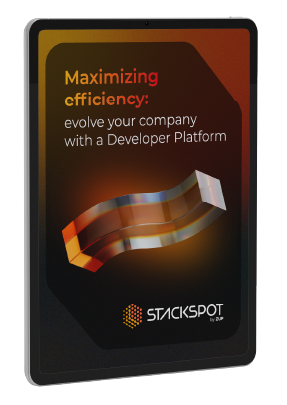Chief Information Officers (CIOs) and Chief Technology Officers (CTO) must stay on the cutting edge of technology to meet their strategic objectives. Whether you are looking inward at your organization, trying to improve processes, or using technology outward to improve and innovate with products, generative artificial intelligence (AI) can play a critical role.
Now is the time to understand and learn what’s needed to position your organization for short and long-term success.
What, What is Generative AI?
Before taking a deep trip down the rabbit hole that is generative AI, you need to start with an understanding of AI as a whole. AI is a term used quite widely and has a vast scope. AI can include a variety of information technology platforms or computer systems. It is about allowing and enabling computer systems to learn from data over time.
Generative AI is a reference to a set of AI topics around the creation of AI-generated content. Think about generative AI as a way to, autonomously via machines, compose anything that you need. It is an area of focus with endless economic potential. The applications of generative AI are endless, including but not limited to fields of application in healthcare, entertainment, marketing, art, and more.
How Generative AI Differs From Other Kinds of AI
There is a clear distinction or difference between generative AI and other kinds of AI. With more standard applications of AI, you are setting up computer systems or machines to learn from examples. We can then teach, via models, the computer system to analyze data and predict outcomes. Traditional AI puts a focal point on the detection of patterns and decision-making based on the model.
Generative AI is another form of an AI or machine learning model. The biggest difference with generative AI though is that it has the ability not just to predict what comes next, or analyze and optimize, but to create new content.
Generative AI will take the data that it was trained on, and then create new videos, images, text, music, or any other content that it can come up with. Deep learning models are in place to help with these creatively unique outputs from the generative AI tools. ChatGPT and Bard are two of the more mainstream solutions at the moment.
How Generative AI Can Impact Tech-Oriented Areas Today
Whether you are a CTO, CIO, or any other leader in an organization, you are trying to stay one step ahead of the competition. There are key ways to do that, including improving your processes, advancing your technologies, finding efficiencies, and more.
Generative AI needs to be seen as a tool. The organizations that can take advantage of it most will be those that are in a position to be top players in their respective industries. Empowering the employee base and yourselves as leaders to have paths to working with generative AI will unlock paths forward you may not have in your viewpoint.
Repetitive and mundane tasks in your organization can be removed with generative AI successfully deployed. It starts with identifying these tasks, then building a process to enable generative AI to eliminate the drudgery.
How It Can Impact the Work of Software Engineering
Software engineering is ready to take a seismic leap forward thanks to generative AI. Engineers will have a new level of empowerment, essentially an AI partner to help with as they work through different languages, hurdles in their code, and more. Generative AI is changing the way developers work for the better.
Say you have a team of engineers working on a new in-house build of an application. They may be stuck with their code, trying to refine, avoid tech debt, and polish. Generative AI could help them get over that block to see a new path forward they couldn’t come up with independently.
Software engineers could help create higher-quality code with generative AI. The development of things like automated unit testing, for example, could assist with these tools. Documentation to support the software could be generated via the AI, to make it easier to train folks, onboard, and release.
Conclusion
We don’t have a unanimous answer for CIOs and CTOs to keep up with trends on generative AI, but we do have good tips to implement. Check them out!
Advice to CIOs and CTOs
- Acquire knowledge on what gen AI is and how it can be used;
- Have a vision of potentials and applicability of generative AI for your business;
- Prepare for the possibility of needing to have quality domain data from your business to build customized data products – check our solution with data mesh;
- Be aware of ethical responsibility issues – here you can read AI Ethics by Mark Coeckelbergh;
- Keep up to date with new tools and models.
What does it take to position your organization for success?
- Define clear objectives;
- Identify relevant use cases;
- Invest in AI talent and expertise;
- Ensure data quality and organization;
- Establish governance and compliance processes.
Organizations that pause and sit on the sideline will be those left in the dust as generative AI takes over. To start to enable your organization to make the most of generative AI, talk to a sales representative today!












